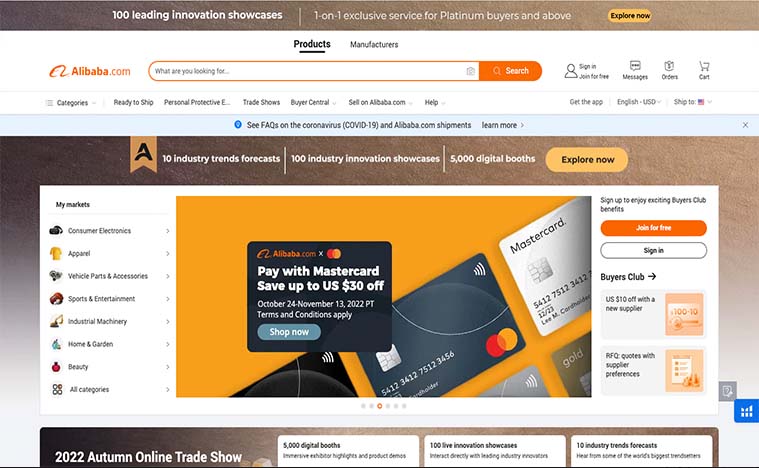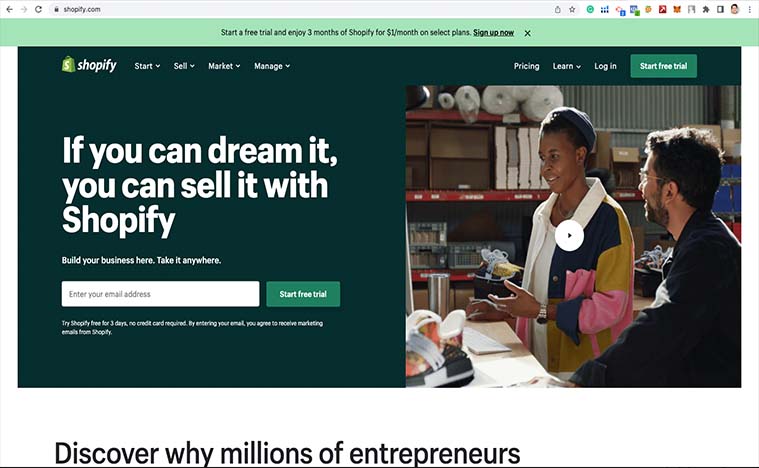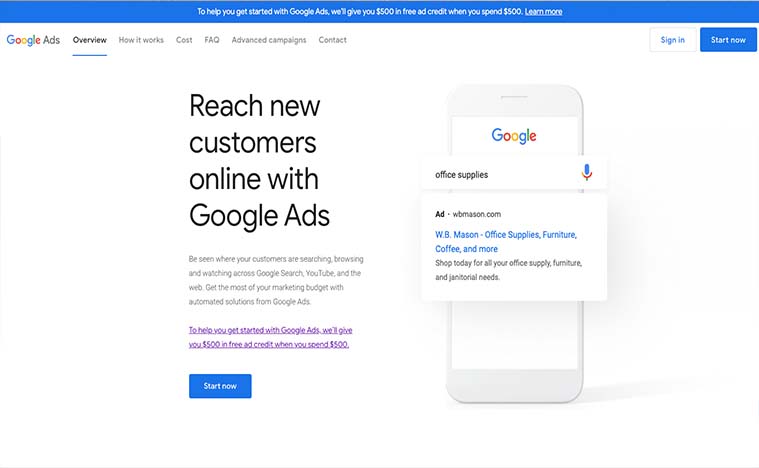Featured
Dropshipping: What Is It & How To Get Started
What Is Dropshipping?
Dropshipping is a type of online business model where e-commerce businesses sell products without having to hold any inventory. For example, after a store owner receives a new order from a customer, they will then go contact the supplier, who will in turn directly ship the products to the customer’s front doorstep.
Dropshipping is a popular online business model for beginner e-commerce entrepreneurs as it’s relatively simple to set up and requires a minimal upfront investment. Dropshipping businesses can be run from anywhere in the world with an internet connection, making it a great option for entrepreneurs who are looking to start their own businesses without quitting their day job.
How Does Dropshipping Work?
The dropshipping model has a few key components:
- A supplier: This is the person or company who owns the products that you’ll be selling. They’re also responsible for manufacturing, packaging, and shipping the products to your customers. In some cases, you may be able to find suppliers on marketplaces like AliExpress and Oberlo Verified, or through dropshipping directories like Wholesale Central.
- A platform: This is the software that you’ll use to create and run your store. Shopify is the most popular platform for dropshippers because it’s designed specifically for e-commerce entrepreneurs, it’s easy to use, and it integrates with apps like Oberlo. In short, This is an app that allows you to find products to sell online, add them to your Shopify store, and start selling today. It’s perfect for dropshippers because it simplifies the process of adding products to your store. Plus, Oberlo automatically selects the cheapest supplier so that you can maximize your profit margins.
- An audience: These are the people who will buy your products. Before starting a dropshipping business, you need to think about who will want to buy what you’re selling, and how you can reach them through marketing channels like Facebook ads or Google Ads.
When a customer places an order on your store, they pay you the retail price that you set for the product (which is usually higher than the wholesale price that you pay to your supplier). Then, you simply place an order with your supplier for that same product at the wholesale price and give them your customer’s shipping information.
Your supplier will package and ship the product directly to your customer on your behalf. And that’s it! You don’t have to worry about manufacturing, packaging, or shipping – all of those tasks are handled by your supplier.
What Are The Benefits Of Dropshipping?
- No need to carry inventory: One of the biggest advantages of dropshipping is that you don’t need to hold any inventory. This means that you don’t have to worry about storage costs, shipping costs, or any other costs associated with holding inventory. Dropshipping allows you to sell products without having to carry any inventory, which can save you a lot of money.
- Easy to get started: Another advantage of dropshipping is that it’s easy to get started. Unlike other business models, you don’t need to invest a lot of money in order to start a dropshipping business. All you need is a domain name and a hosting plan, and you can be up and running in no time. Additionally, there are many dropshipping suppliers that offer turnkey solutions that make it even easier to get started.
- Low overhead costs: Dropshipping also has low overhead costs when compared to other business models. This is because you don’t need to carry any inventory or invest in any physical infrastructure. Additionally, your marketing expenses will be lower because you won’t need to spend any money on advertising or promotion.
What Are The Disadvantages Of Dropshipping?
- Lack of Control: One of the biggest disadvantages of dropshipping is that you don’t have as much control over your product. Unlike a traditional e-commerce business, where you control the inventory and shipping process, with dropshipping you are at the mercy of your supplier. If they are out of stock on an item, you will be unable to sell it until they restock. Additionally, if they make a mistake with an order, it is up to them to correct it. This can often be a frustrating experience for both you and your customer.
- Lower Margins: Another disadvantage of dropshipping is that your margins will typically be lower than if you were to sell products yourself. This is because you have to pay the supplier for each product that you sell, as well as shipping costs. This can eat into your profits and make it difficult to compete with other businesses selling similar products.
- Shipping Delays: Another potential issue with dropshipping is shipping delays. Because you are relying on the supplier to ship the products to your customers, there is always the potential for delays. This can often lead to frustrated customers who may take their business elsewhere.
How To Start Dropshipping?
Dropshipping is a great business model for those who are looking to start an online store with little to no upfront investment. In this section, we will show you how to start dropshipping in 4 simple steps.
- Choose A Niche
- Find A Supplier
- Create Your Store
- Generate Traffic
Choose A Niche
The first step to starting a dropshipping business is to choose a niche. When choosing a niche, it is important to consider two factors: profitability and passion. It is important to choose a niche that is profitable so that your business can be sustainable in the long run. But it is also important to choose a niche that you are passionate about so that you can build a successful brand around it.
Find A Supplier
Once you have chosen your niche, the next step is to find a supplier. There are many ways to find suppliers, but the most effective way is through directories such as Alibaba and AliExpress. When looking for suppliers, it is important to consider three factors: price, quality, and delivery time. Once you have found a few suppliers that meet your criteria, the next step is to contact them and inquire if they sell dropshipping services.
Create Your Store
The next step is to create your store. You can create your store using platforms such as Shopify and WooCommerce. When creating your store, it is important to keep two things in mind: design and user experience. Your store should be designed in such a way that it is visually appealing and easy to navigate. Once your store is up and running, the next step is to add products from your supplier.
Generate Traffic
The final step is to generate traffic to your store so that you can make sales. There are many ways to generate traffic. However one of the most effective ways is through paid advertising on channels such as Google Ads or Facebook Ads. Another way to generate traffic is through search engine optimization (SEO). SEO is the process of optimizing your website for Google’s search algorithm so that you can rank higher in search results.
Bottom Line
Dropshipping offers plenty of advantages for budding entrepreneurs – low barrier of entry, no need for extensive experience or knowledge, and location independence – making it an attractive option for anyone looking to set up their own online store. So if you’re interested in starting your own e-commerce business but don’t know where to begin, consider giving dropshipping a try – it just might be the perfect fit for you.
Brett Heimann is a marketing & advertising professional with 10 years of experience. He's the founder of MarketingAgency.com and contributes to other publications such as; Entrepreneur, Thrive Global, and StockMarket.com. His passion for digital marketing began after graduating with a B.S.B.A in business administration and finance in 2013. After completing college, he went on to become an entrepreneur in the marketing and finance space. Brett loves the ability to deliver to his readers engaging and educational content that can be easily consumed by the reader. He enjoys writing about a wide variety of marketing topics such as; Search Engine Optimization (SEO), Paid Advertising (PPC), E-Commerce, and Lead Generation For SMBs to name a few. Brett, a South Florida native, enjoys spending time with his wife and two sons outdoors and is a big basketball and MMA fan.














